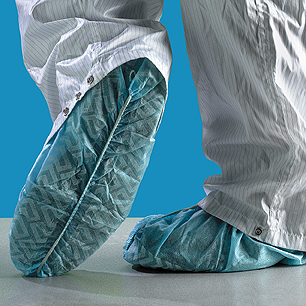
I’m sure you’ve seen images like this before. Something to make you feel unsafe or scared. Bright colours, visible warning signs, all things that point to those drums being filled with things that are horribly dangerous, and likely to leak out at any moment and poison the surrounding area à la The Simpsons. The reality is…
Significantly more mundane, thanks in part to all those environmental regulations that some people think are bad ideas. The thing is that there is not any one specific kind of “nuclear waste.” The other thing is is that this was a publicity stunt by Greenpeace in 2012 to protest South Africa wanting to invest in nuclear power and none of those barrels were real or filled with anything.
Nuclear waste, at least in Canada is divided into several levels. The primary ones being Low, Intermediate, and High. Super creative I know but it was a government committee that came up with them so you can’t really count on much. Understanding what nuclear waste actually is and how it is handled is important. Otherwise, the only visible reaction that someone looking for information might see is the carefully curated hysteria that anti-nuclear groups have been cultivating for decades as they simultaneously decry nuclear waste and prevent any attempt to improve handling and storage projects like Yucca Mountain.
So what are the different kinds of nuclear waste? Low-Level Waste (LLW) is actually the most amorphous as it is basically any kind of material that either has detectable radiation coming from it or has been exposed to a radioactive source but does not otherwise fit into either high or intermediate categories of nuclear waste. Things that generally fall into this category are disposable coverings like gloves and shoe coverings from nuclear power/research facilities and radiological departments of hospitals. Items in this category are usually very barely radioactive and have very short periods of time that residual radiation is detectable (hours to weeks), but the regulations state that it must be fully decayed in under 300 years. LLW is generally kept onsite until there is no detectable radiation and then disposed of normally.

Intermediate-Level Waste (ILW) is where things start getting both more definitive and more general. ILW is stated as an object that either contains or has been exposed to radiation and has become radioactive with a lifetime above safe limits of longer than 300 years. These materials are treated as unsafe to be around and thus are stored in shielded containers and handled at distances. Common things are containers, filters, and equipment that is in regular contact with radioactive ores or fuel pellets/bundles, medical isotopes and associated medical equipment, and parts of decommissioned nuclear reactors.
Finally, there is High-Level Waste (HLW) This is the stuff that everyone is always talking about when they say Nuclear waste. But once again it is way less exciting than what people think, mostly because what people think of when they think of nuclear waste doesn’t actually exist as nothing actually is liquid or glows green. HLW essentially only refers to spent nuclear fuel and decayed medical isotope sources. This stuff is generally a mixture of a bunch of radioactive elements from the fissioning and decay of the material and thus has varying rates at which the radiation being emitted by it decays. So when people say that spent nuclear fuel is dangerous for hundreds of thousands of years they are not being entirely truthful. If you haven’t read my article about nuclear half lives I highly recommend going and reading that here. The gist for the impatient is that the longer the half-life of the isotope is, the less dangerous it is radiologically.

But here’s where the not-quite truth comes into it. the important thing to realize is that since it’s not all one element that it doesn’t get safer at the same rate as the longest-lived isotope in it, it gets safe much much faster than that. To find out more about how nuclear fuel decays you’ll have to wait until my next article. The important thing to remember is that nuclear fuel, at least in Canada, is not tossed about all willy nilly. It is carefully monitored and stored and All of the HLW ever used by Canada would fit into a single hockey rink and not even reach the bottom of the first balcony. Compare that to a coal plant that uses millions of tonnes per year and I think that’s a pretty good deal.

Next: Nuclear Waste Pt: 2 Fear is the little Death


Nicely explained. Is Canada building a geological repository?
Carbon dioxide (Excess CO2 that oceans and plants cant absorb) also stays in atmosphere for thousands of years, says IPCC.
Click to access FAQ6_2.pdf
LikeLike
My fear has never been nuclear waste.
Nuclear accidents are a given when there are no industry standards, or they aren’t followed due to laxyness and cheapness, something that is already rampant in Alberta industry, and Canada.
My fiancé worked in many gas plants in Alberta. My sister did NDT on pipelines. All the companies are the same. They buy the cheapest materials available. They overwork and undertrain their employees. They keep on crappy employees until the good ones get mad. They don’t give raises but upper management continually gets bonuses.
Eventually you have leaks. Explosions, deaths. With oil maybe 100 people die in a building or a waterway is destroyed. With gas you have to empty a county.
Nuclear accidents are so destructive on much bigger scales. If we could have better guarantees against chroney capitalism and human greed then nuclear would never be an issue.
LikeLike